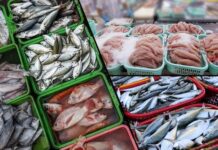
The Front of Package’s target is to offer basic nutrition information in a better accessible place instead of the side and back of the packages. Besides, regulation of junk foods has become necessary, and for this, FSSAI is planning to introduce a ‘front of package label’.
Very soon, a packet of biscuits or chips that you purchase will come with a warning label upfront. The FSSAI, the food regulator, is looking to develop FOP or front-of-pack labels for packaged food to reduce the high consumption foods having little to zero nutritional value.
The processed food market of India is believed to be at least Rs 3,31,353 crore and has a 24% year-on-year growth. Affordability, globalization, urbanization has marked the rise in per capita income. Also, the Covid-19 pandemic has evolved the snacking habits. The pandemic is considered one of the primary reasons for the rapid growth and the heightening health concerns.
What is FoP labeling?
FoP labeling is referred to a system where all the details about all the nutrients and their quality are given upfront on a package of food in an easy-to-understand manner. In India, all the present norms only need all the pre-packed processed foods to display nutritional details at the side or back of the food packet, but salt is not required to be shown. Several countries across the globe are already following this.
The norms of FSSAI
FSSAI has been considering all these norms for about the last two years. In the previous year, draft Labeling and Display regulations have been released by FSSAI for superseding the Food Safety and Standards Regulations 2011. It was necessary to show red color-coding on FoP labels on all the packaged food items containing high-salt, high-sugar, and high-fat content levels. Besides, it also said that the food labels would declare per serve contribution to the recommended dietary allowance (RDA) on the pack’s front.
Across the world, the display of High Trans-Fat, Sugar, & Sodium (HFSS) has been a very common practice in three different colors. The red color represents high content, amber represents medium content, and green indicates low content.
Looking to reduce junk food consumption
The chief executive officer of FSSAI (Food Safety and Standards Authority of India), Arun Singhal, has expressed his concern about the regular increment in junk food consumption because it results in obesity in the children and the youth of India. He is also planning to launch FoP or front-of-package labeling on the packed foods. He believes that it will help the customers to choose healthier foods. It was asked to IIM Ahmedabad to survey the FoP label’s nature in the consumers’ interests. All these were said on the 15th anniversary of FSSAI formation.
He has assured that FSSAI is efficient in introducing such a label in the nation. Also, it has become necessary because of not only obesity but malnutrition and a huge problem in the children and youth of the country.
According to him, there exists a demand for packaged food. And it is necessary to offer information in a simplified way about the effect of packaged food on human health so that the consumers can choose their foods better.
Several other countries like Brazil and Chile, which have put the FoP label to use, have witnessed reduced junk food consumption. Singhal said that many deliberations had been there with the stakeholders as well. A consensus has arrived on most of the problems after detailed consultation with the industry and the consumers who showcased different opinions initially about this problem.
The solution and its impact
All the technical problems have been sorted out. However, one issue is still left. It is the FoP label’s nature. For finding a solution to the problem, IIM Ahmedabad is asked to perform a survey.
Already, IIM Ahmedabad has started with their word. Based on the conclusion and findings of the survey, the regulations will be drafted by FSSAI, Singhal added.
However, the implementations of all these regulations will be impacting FMCG majors that possess a significant presence in packaged food products like RPG Group, Bikanervala, Parle, PepsiCo India, Haldirams, Britannia, ITC, Nestle, and several others.
India is a country where many people are suffering from obesity and malnutrition. It happens for plenty of reasons, right from poor diet up to poverty. Besides, the Covid-19 pandemic increased the number. FSSAI’s concern about this issue is very obvious. However, it all depends on the survey conducted by IIM Ahmedabad currently.
IndiFoodBev — authentic, impactful and influential
An English-language food and beverage processing and packaging industry B2B platform in print and web, IndiFoodBev is in its third year of publication. It is said that the Indian food and beverage industries represent approximately US$ 900 billion in revenues which implies more than 20% of the country’s GDP. Eliminating the wastage on the farmside can help to deliver more protein to a higher number of the population apart from generating sizable exports. The savings in soil, seeds, water, fertilizer, energy and ultimately food and nutrition could be the most immense contribution that country is poised to make to the moderation of climate change.
To improve your marketing and grow sales to the food and beverage processing and packaging industry, talk to us. Our research and consulting company IppStar [www.ippstar.org] can assess your potential and addressable markets in light of the competition. We can discuss marketing, communication, and sales strategies for market entry and growth.
Suppliers and service providers with a strategy and budget for targeted marketing can discuss using our hybrid print, web, video, and social media channels to create brand recognition linked to market relevance. Our technical writers are ready to meet you and your customers for content.
The second largest producer of fruit and vegetables in the world is continuously expanding processing capacities and delivery systems with appropriate innovative technologies. We cover product and consumer trends, nutrition, processing, research, equipment and packaging from farm to thali. Get our 2025 media kit and recalibrate your role in this dynamic market. Enhance your visibility and relevance to existing markets and turn potential customers into conversations. Ask for a sample copy of our bi-monthly in print or our weekly IndiFoodBev eZine each Wednesday.
For editorial info@ippgroup.in — for advertisement ads1@ippgroup.in and for subscriptions subscription@ippgroup.in
Naresh Khanna – 10 February 2025
Subscribe Now










